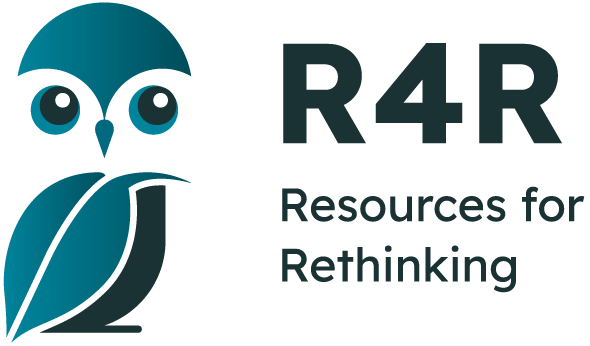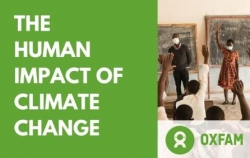- Home
- Tutorial
- Resource Guides
- Focus Areas
- LSF Programs
-
Professional
Development - Review Process
-
A project of LSF

Search for Resources
Description
These activities explore the human impact of the climate emergency and provide new spaces, approaches and opportunities for climate education and social action The resource frames the climate emergency as a human rights and people-centred issue and supports teachers to promote a sense of agency and empowerment within young people. This in turn is recognized as one strategy to help young people manage eco-anxiety, as well as disillusionment and disengagement with climate issues.
The resource includes five activities:
- Activity 1 - Climate change, human rights and equality - An activity to introduce the links between climate change and human rights
- Activity 2 - Climate justice - A mystery activity to demonstrate the inequalities inherent in the global interconnectedness of climate change. All people are affected in some way by the climate emergency but who you are and where you are in the world matters
- Activity 3 – Critically thinking about evidence -An activity to examine case study films and make conclusions about which human rights are most threatened by climate change, which groups in society are most affected and what the solutions are.
- Activity 4 – A climate consequences wheel - A consequences wheel activity using evidence from one case study film to make inferences about the different impacts of climate change on members of a community with different personal characteristics (for example: male or female).
- Activity 5 – The climate game - A role play activity for which a clear space, either indoors or outdoors, is required. Learners compare the impacts of climate change on people from different backgrounds and in different circumstances. For some participants, the impacts of climate change overlap and are amplified. This strengthens learners’ understanding of intersectionality (interconnectedness).
General Assessment
What skills does this resource explicitly teach?
Students have an opportunity to strengthen those skills associated with critical thinking, debate and discussion, and social action
Strengths
The resource approaches the topic of climate change from a unique perspective in examining the impact of climate change within the context of human rights.
The resource adopts a pedagogy that effectively engages students by providing concrete examples that served to illustrate how the impact of climate change depends upon who and where you are. It further allows considerable flexibility to teachers in choosing those topics which are of particular relevance to their curriculum obligations.
Recommendation of how and where to use it
The resource can be used to complement and supplement any study of climate change or any study of the conditions faced by particular peoples in the developing world, or as an example of the concepts of social justice within the context of global citizenship.
Relevant Curriculum Units
The following tool will allow you to explore the relevant curriculum matches for this resource. To start, select a province listed below.
- Step 1Select a province
- British Columbia
- Step 2Select a grade level
- Grade 6
- Step 3Select a subject
- Social Studies
- Step 4Relevant matches
- Global Issues and Governance: Complex global problems require international cooperation to make difficult choices for the future.
- Manitoba
- Step 2Select a grade level
- Grade 7
- Step 3Select a subject
- Social Studies
- Step 4Relevant matches
- People & Places in the World: Global Quality of Life
- Grade 9
- Step 3Select a subject
- Social Studies
- Step 4Relevant matches
- Canada in the Global Context
- Canada in the Contemporary World
- Newfoundland & Labrador
- Step 2Select a grade level
- Grade 6
- Step 3Select a subject
- Social Studies
- Step 4Relevant matches
- World Issues
- Grade 8
- Step 3Select a subject
- Religious Education
- Step 4Relevant matches
- Ethics and Morality
- Grade 9
- Step 3Select a subject
- Religious Education
- Step 4Relevant matches
- Global Concerns
- Northwest Territories
- Step 2Select a grade level
- Grade 6
- Step 3Select a subject
- Social Studies
- Step 4Relevant matches
- Global Issues and Governance: Complex global problems require international cooperation to make difficult choices for the future.
- Nova Scotia
- Step 2Select a grade level
- Grade 6
- Step 3Select a subject
- Social Studies
- Step 4Relevant matches
- Social Studies 6: World Issues
- Grade 9
- Step 3Select a subject
- Social Studies
- Step 4Relevant matches
- Citizenship 9: Global Citizenship
- Ontario
- Step 2Select a grade level
- Grade 7
- Step 3Select a subject
- Geography
- Step 4Relevant matches
- Natural Resources around the World: Use and Sustainability
- Grade 8
- Step 3Select a subject
- Geography
- Step 4Relevant matches
- Global Inequalities: Economic Development and Quality of Life
- Global Settlement: Patterns and Sustainability
- Prince Edward Island
- Step 2Select a grade level
- Grade 6
- Step 3Select a subject
- Social Studies
- Step 4Relevant matches
- World Issues
- Grade 9
- Step 3Select a subject
- Social Studies
- Step 4Relevant matches
- Interdependence: Atlantic Canada in the Global Community: Environment in the Global Community
- Quebec
- Step 2Select a grade level
- Grade 9
- Step 3Select a subject
- Social Studies
- Step 4Relevant matches
- The Contemporary World: Environment
- Saskatchewan
- Step 2Select a grade level
- Grade 6
- Step 3Select a subject
- Social Studies
- Step 4Relevant matches
- Social Studies 6: Canada & Our Atlantic Neighbours -Resources and Wealth
- Yukon Territory
- Step 2Select a grade level
- Grade 6
- Step 3Select a subject
- Social Studies
- Step 4Relevant matches
- Global Issues and Governance: Complex global problems require international cooperation to make difficult choices for the future.
Themes Addressed
Air, Atmosphere & Climate (1)
- Climate Change
Citizenship (1)
- Sustainable Consumption
Human Rights (3)
- Environmental Racism/Justice
- Poverty
- Social Justice
Sustainability Education Principles
| Principle | Rating | Explanation |
|---|---|---|
| Consideration of Alternative Perspectives | Good | Although the resource starts with the assumption that the negative impacts of climate change is unevenly felt by people around the world and the injustice of this should be recognized, it allows students to consider, discuss and debate this assumption by involving the students in a series of activities that encourage the discussion. |
Consideration of Alternative Perspectives:
| ||
| Multiple Dimensions of Problems & Solutions | Very Good | The resource helps students focus on the impact of climate change on people rather than on the environment. The environmental consequences are recognized but the resource explores the uneven economic and social consequences of the changes in the environment and frames the climate emergency as a human rights and people-centred issue. |
| Multiple Dimensions of Problems & Solutions: Effectively addresses the environmental, economic and social dimensions of the issue(s) being explored.
| ||
| Respects Complexity | Very Good | The resource helps students understand the concept of intersectionality or interconnectedness as it applies in investigating the impact of climate change on people. It recognizes that the impacts of the climate emergency are not felt equally across humankind but are interconnected, historically or socially, to other forms of injustice and inequality. |
| Respects Complexity: The complexity of the problems/issues being discussed is respected. | ||
| Acting on Learning | Satisfactory | No action component is prescribed by the resource but the resource does include links to a number of learning and social action materials. |
| Acting on Learning: Learning moves from understanding issues to working towards positive change — in personal lifestyle, in school, in the community, or for the planet
| ||
| Values Education | Very Good | The issue of climate change is examined through the lens of human rights and by so doing, students begin to appreciate the inequalities that exist within the world and how these inequalities are sometimes heightened by climate change. Students are asked to think about who is responsible for and who is harmed by climate change. |
| Values Education: Students are explicitly provided with opportunities to identify, clarify and express their own beliefs/values. | ||
| Empathy & Respect for Humans | Very Good | The purpose of this resource is to reframe the climate emergency in the context of human rights and equality, and not to view it as an environmental emergency alone. The climate emergency impacts people unequally and it’s hitting people living in the world’s poorest communities the hardest. What’s more, the people on this climate change frontier are the people who have done the least to cause the crisis. The idea of climate justice explores the fact that the people who are the least responsible for causing the emergency in the first place are the people who are impacted by it the most. This is seen most clearly by comparing high-income with low-income countries. However, inequalities also exist between people and social groups living within both high-income and low-income countries. |
| Empathy & Respect for Humans: Empathy and respect are fostered for diverse groups of humans (including different genders, ethnic groups, sexual preferences, etc.). | ||
| Personal Affinity with Earth | Satisfactory | Attention is paid to the effect of climate change on the environment but the emphasis is on the consequences for those people living in the affected environment. |
| Personal Affinity with Earth: Encourages a personal affinity with -the natural world.
| ||
| Locally-Focused Learning | Satisfactory | The lessons explore the impact of climate change on those who are often least able to deal with those impacts and least responsible for causing climate change. Certain of the individual activities, however, asks students to examine their own situation and to compare that to the lives of others. The effects of climate change may be unequal but climate change has relevance for all. |
| Locally-Focused Learning: Includes learning experiences that take advantage of issues/elements within the local community.
| ||
| Past, Present & Future | Good | The activities describe the economic and social setting for selected peoples before their lives were dramatically altered by climate change and show how their future prospects are dim unless steps are taken to accommodate and mitigate climate change. |
| Past, Present & Future: Promotes an understanding of the past, a sense of the present, and a positive vision for the future. | ||
Pedagogical Approaches
| Principle | Rating | Explanation |
|---|---|---|
| Open-Ended Instruction | Good | Each of the activities engage learners in a discussion and consideration of the link between climate change and human rights. Learners are asked to suggest how climate change may be relevant for the Sustainable Development Goals; to think about how different factors related to who and where you are matters with respect to the impact of climate change; to identify evidence of human upheavals due to climate change; to create their own climate consequence wheels; and to visualize and internalize the unequal burden that climate change imposes on people. |
| Open-Ended Instruction
: Lessons are structured so that multiple/complex answers are possible; students are not steered toward one 'right' answer. | ||
| Integrated Learning | Very Good | The various topics and activities included in the resource have relevance for geography (where is climate change most visible and why?), economics (how does climate change create challenges for people's efforts to make a living?), ethics and citizenship (how is climate change related to issues of social justice?). |
| Integrated Learning: Learning brings together content and skills from more than one subject area
| ||
| Inquiry Learning | Good | The individual lessons explore different elements in illustrating the link between climate change and social justice and it does this by engaging students in activities that allow them to arrive at their own understandings that "we are not in this all together" but that the harm is unequally felt. |
| Inquiry Learning: Learning is directed by questions, problems, or challenges that students work to address.
| ||
| Differentiated Instruction | Very Good | The lessons allow students to work in small groups to identify connections between climate change and the SDGs, to examine pictures and view films designed to illustrate how climate change affects different individuals and groups, to create mind maps or consequence wheels that illustrate who you are and where you are matters with respect to climate change, to role play different people to better understand the inequalities associated with the impact of climate change. |
| Differentiated Instruction: Activities address a range of student learning styles, abilities and readiness.
| ||
| Experiential Learning | Good | The resource uses role playing and other activities that engage students in exploring the real but not well addressed issue of climate change and social justice. |
| Experiential Learning: Authentic learning experiences are provided
| ||
| Cooperative Learning | Satisfactory | Students have the opportunity to work in small groups and to share their perspectives with their classmates |
| Cooperative Learning: Group and cooperative learning strategies are a priority.
| ||
| Assessment & Evaluation | Good | The many activities allow teachers to make formative evaluations about student understanding of the issues raised by the resource. |
| Assessment & Evaluation: Tools are provided that help students and teachers to capture formative and summative information about students' learning and performance. These tools may include reflection questions, checklists, rubrics, etc. | ||
| Peer Teaching | Good | There is considerable sharing among students in both investigating the issues raised and articulating their understanding of and perspectives on these issues. |
| Peer Teaching: Provides opportunities for students to actively present their knowledge and skills to peers and/or act as teachers and mentors.
| ||
| Case Studies | Very Good | The resource uses pictures and film clips to introduce students to different individuals and groups in the developing world who are struggling with the consequences of climate change. |
| Case Studies: Relevant case studies are included. Case studies are thorough descriptions of real events from real situations that students use to explore concepts in an authentic context. | ||
| Locus of Control | Good | The lessons are organized in accordance with the principle of guided inquiry. The issues are identified and activities are designed to help students arrive at their understanding of the issues. |
| Locus of Control: Meaningful opportunities are provided for students to choose elements of program content, the medium in which they wish to work, and/or to go deeper into a chosen issue. | ||

